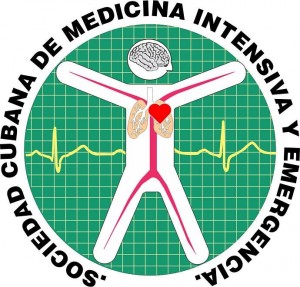Malaria por <em>Plasmodium falciparum</em> como causa de infarto cerebral en niños
Palabras clave:
malaria cerebral, infarto cerebral isquémico, convulsiones, comaResumen
Introducción: La malaria cerebral, provocada por Plasmodium falciparum, es la complicación neurológica más grave de la enfermedad (malaria). Además del daño cerebral difuso, pueden aparecer lesiones focales de tipo isquémico. La obstrucción del flujo sanguíneo cerebral y la respuesta inflamatoria constituyen los principales mecanismos de producción de la isquemia e infarto cerebral oclusivo.
Objetivo: Describir el diagnóstico, tratamiento y evolución de dos niños con infarto cerebral secundario a malaria por Plasmodium falciparum.
Presentación de caso: Se presentan dos pacientes admitidos en la Unidad de Cuidados Intensivos Pediátricos, del Hospital Central de Maputo, Mozambique, con diagnóstico de malaria cerebral y que, durante la evolución de la enfermedad, tuvieron convulsiones y signos de focalización neurológica. En la tomografía computarizada se comprobó infarto cerebral. Ambos pacientes fueron tratados según protocolo de tratamiento para malaria cerebral asociado a medicación con antiagregante plaquetario y vasodilatadores. Egresan de la institución recuperados, con secuelas neurológicas.
Conclusiones: En pacientes con malaria cerebral, la aparición de manifestaciones neurológicas focales es sospecha de presencia de un infarto isquémico sintomático. Por tanto, se deben prescribir estudios imagenológicos que sustenten el diagnóstico clínico.
Descargas
Citas
1. Lalloo DG, Shingadia D, Bell DJ, Beeching NJ, Whitty CJM, Chiodini PL. PHE Advisory Committee on Malaria Prevention in UK Travellers. UK malaria treatment guidelines 2016. Journal of Infection. 2016;72:635-49. Doi: https://doi.org/10.1016/j.jinf.2016.02.001
2. Barros Pinto MP, Marques G. Severe malaria. Infection. 2020;48:143-6. Doi: https://doi.org/10.1007/s15010-019-01371-w
3. Wassmer SC, Taylor TE, Rathod PK, Mishra SK, Mohanty S, Arevalo-Herrera M, et al. Investigating the Pathogenesis of Severe Malaria: A Multidisciplinary and Cross-Geographical Approach. Am. J. Trop. Med. Hyg. 2015;93(Suppl 3):42-56. Doi: https://doi.org/10.4269/ajtmh.14-0841
4. Mawatari M, Kobayashi T, Yamamoto S, Takeshita N, Hayakawa K, Kutsuna S, et al. Mild encephalitis/ encephalopathy with a reversible splenial lesion due to Plasmodium falciparum malaria: a case report. Trop Med Health. 2018 Nov;46:37. Doi: 10.1186/s41182-018-0119-4.
5. Kochar SK, Kamath SD, Toshan N, Singhal Y, Kochar A. A case of Plasmodium vivax malaria presenting as acute cerebral infarct. J Vector Borne Dis. 2017 [citado: 01/11/2020];54:197-200. Disponible en: https://www.jvbd.org/article.asp?issn=0972-9062
6. Singla N, Gupta M, Singh R, Kumar A. A typical neurological manifestations of malaria. BMJ Case Rep. 2014 Aug;2014. Doi: https://doi.org/10.1136/bcr-2014-204807
7. Kampfl AW, Birbamer GG, Pfausler BE, Haring HP, Schmutzhard E. Isolated pontine lesion in algid cerebral malaria: clinical features, management, and magnetic resonance imaging findings. Am J Trop Med Hyg. 1993 Jun;48(6):818-22. Doi: https://doi.org/10.4269/ajtmh.1993.48.818
8. Carod-Artal FJ. Ictus de causa infecciosa en el trópico. Rev Neurol. 2007 Jun;44(12):755-63. Doi: https://doi.org/10.33588/rn.4412.2006568
9. Schiess N, Villabona‑Rueda A, Cottier KE, Huether K, Chipeta J, Stins MF. Pathophysiology and neurologic sequelae of cerebral malaria. BMJ. 2020;19(266). Doi: https://doi.org/10.1186/s12936-020-03336-z
10. Brejt JA, Golightly LM. Severe malaria: update on pathophysiology and treatment. Curr Opin Infect Dis. 2019 Oct;32(5):413-8. Doi: https://doi.org/10.1097/qco.0000000000000584
11. Avril M, Benjamin M, Dols MM, Smit JD. Interplay of Plasmodium falciparum and trombin in brain endothelial barrier disruption. Scientific Reports. 2019;9(13142). Doi: https://doi.org/10.1038/s41598-019- 49530-1
12. Gerstl L, Weinberger R, Heinen F, Bonfert MV, Borggraefe I, Schroeder AS, et al. Arterial ischemic stroke in infants, children, and adolescents: results of a Germany-wide surveillance study 2015-2017. J Neurol. 2019 Dec;266(12):2929-41. Doi: https://doi.org/10.1007/s00415-019-09508-5
13. Leopoldino Santos JF, Maiumi Fukujima M, Gabbai AA. Malaria and stroke: case report. Arq. Neuro-Psiquiatr. 1999 Dec [citado: 01/11/2020];57(4):1024-6. Disponible en: http://www.scielo.br/scielo.php?script=sci_arttext&pid=S0004-282X1999000600021&lng=en.https://doi.org/10.1590/S0004-282X1999000600021.
14. Sahu PK, Satpathi S, Behera PK, Mishra SK, Mohanty S, Wassmer SC. Pathogenesis of cerebral malaria: new diagnostic tools, biomarkers, and therapeutic approaches. Front. Cell. Infect. Microbiol. 2015;5:75. Doi: 10.3389/fcimb.2015.00075
15. Moghaddam SM, Birbeck GL, Taylor TE, Seydel KB, Kampondeni SD, Potchen MJ. Diffusion-Weighted MR Imaging in a Prospective Cohort of Children with Cerebral Malaria Offers Insights into Pathophysiology and Prognosis. Am J Neuroradiol. 2019 Sep;40(9):1575-80. Doi: 10.3174/ajnr.A6159
16. Seydel KB, Kampondeni SD, Valim C, Potchen MJ, Milner C, Muwalo FW, et al. Brain swelling and death in children with cerebral malaria. N. Engl. J. Med. 2015;372(12):1126-37. Doi: 10.1056/NEJMoa1400116
17. Potchen MJ, Kampondeni SD, Seydel KB, Haacke EM, Sinyangwe SS, Mwenechanya M, et al. 1.5 Tesla Magnetic Resonance Imaging to Investigate Potential Etiologies of Brain Swelling in Pediatric Cerebral Malaria. Am J Trop Med Hyg. 2018 Feb;98(2):497-504. Doi: 10.4269/ajtmh.17-0309
18.Wassmer SC, Raymond Grau GE. Severe malaria: what’s new on the pathogenesis front? Int J Parasitol. 2017 February;47(2-3):145-52. Doi: 10.1016/j.ijpara.2016.08.002.
19. Orjuela-Sánchez P, Ong PK, Zanini GM, Melchior B, Martins YC, Meays D, et al. Transdermal glyceryl trinitrate as an effective adjunctive treatment with artemether for late-stage experimental cerebral malaria. Antimicrob Agents Chemother. 2013 nov;57(11):5462-71. Doi: https://doi.org/10.1128/aac.00488-13.
20. Cabrales P, Zanini GM, Meays D, Frangos JA, Carvalho LJ. Murine cerebral malaria is associated with a vasospasm-like microcirculatory dysfunction and survival upon rescue treatment is markedly increased by nimodipine. Am J Pathol. 2010 Mar;176(3):1306-15. Doi: https://dx.doi.org/10.2353%2Fajpath.2010.090691
21. Varo R, Crowley VM, Sitoe A, Madrid L, Serghides L, Kain KC, et al. Adjunctive therapy for severe malaria: a review and critical appraisal. Malar J. 2018;17(47). Doi: https://doi.org/10.1186/s12936-018-2195-7






